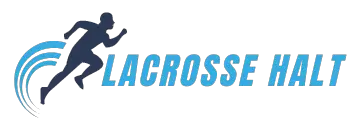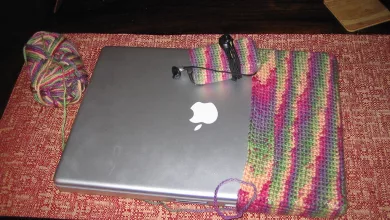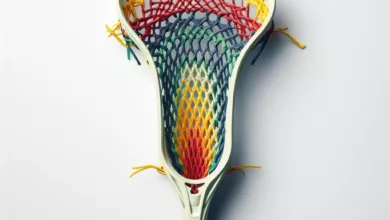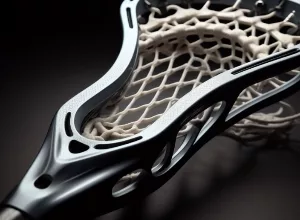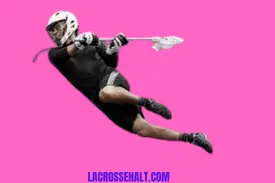best lacrosse head for middies in [2023]
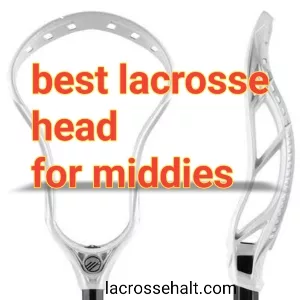
If you are looking for best lacrosse heads for middies then this post is for you.
When it comes to performance, your lacrosse helmet is the single most crucial piece of equipment.
“Discover the ultimate guide to finding the Best lacrosse heads for midfielders. Explore top picks, essential features, and expert insights tailored for midfield players. Elevate your game with precision, power, and versatility.”
Your lacrosse head affects many aspects of your game, including passing, shooting, catching, picking up ground balls, checking, and much more. Helmets and pads are crucial for safety, of course.
It's difficult to choose the best lacrosse head when there are so many available on the market these days. To assist, we've put together 5 other guides that offer the top choices according to position in addition to this one, which features the top lacrosse heads for a range of positions.
To get started, either continue reading to view our top 3 picks in each position, or choose one of the links below to see the best heads for that position:
Best lacrosse heads by position:
Our top 3 choices for lacrosse heads by position are shown below. If I feel that a new head deserves to be on this page, I will update this guide as soon as they emerge.
I investigated which heads players at the collegiate and professional levels were used, read a tonne of customer reviews, and visited my local sporting goods stores to feel the heads with my own hands to locate the best lacrosse heads.
All references to stiffness, weight, and other characteristics in the reviews below are based on heads in that category. For instance, a defensive head must meet a far higher criterion for “above-average” stiffness than a faceoff head.
1: Maverik Optik 3.0
The Optik 3.0, the newest elite assault head in Maverik's well-liked Optik range, was just released in June 2021. The 3.0 is a little stiffer and has more sidewall holes (20 on each side) than the Optik 2.0, which was previously our best-rated attack head. It also has a shorter throat, which helps you have greater control when one-handed cradling. The majority of the Optik 3.0's head is tightly compressed, which increases your control and accuracy when shooting and passing. This head is incredibly simple to string thanks to the additional stringing holes and Maverik's Tension Lock mechanism. The Maverik Optik 3.0 is ideal for low to mid-low pockets because of its low offset.
Should you have a preference for a mid-to-high pocket, though, you could be better off choosing something different. told in told, this is a fantastic head for an attacker. Its stiffness and ability to maintain its shape make it a great-looking face shape, and its reduced throat makes it easier to cradle with one hand. The Maverik Optik 2.0 remains one of the greatest attack heads on the market if you're trying to cut costs.
2:STX Surgeon 900: (best lacrosse head for middies)
The STX Surgeon 900, with its narrow face shape, hard plastic, and lightweight, comes in second on our list of the finest lacrosse heads. At just 4.4 oz, it is among the lightest lacrosse heads ever made. However, considering how light it is, it is surprisingly stiff; this is primarily because STX uses some of the best plastic available, EnduraForm, for its products. However, compared to some of the bulkier (and heavier) assault heads like the ECD Rebel Offence, it's not nearly as stiff. The Surgeon 900's narrow face form extending around the head is just another fantastic feature.
Up until almost halfway up the head, it has a narrow pinch. After that, it starts to flare out towards the scoop, which is still very small in comparison to other heads. This makes it ideal for ball carrying, as so many attackmen do, whether X-raying, cutting in from the wing, or descending the alley from above. The Speed Scoop that STX employed on this head is the final element I'd want to discuss. It is excellent for scooping up ground balls from any angle, and because it hangs just over the top string holes, your strings won't get in the way of your scooping.
3:String King Mark 2A
A great choice if you'd want an attack head with a slightly wider face shape is the StringKing Mark 2A. Unlike many other alternatives, it starts flaring out lower on the head and is compressed towards the throat. Depending on your string job, this sacrifices some grip but offers it an advantage in catching. Its classic tilt towards the throat facilitates one-handed cradling by making it simple to string those low pockets. Like most StringKing heads, I adore the Mark 2A's abundance of sidewall holes, which let you tailor your pocket to your preferred playing technique.
For being the second-lightest head on this list, it is fairly stiff and ought to hold up nicely for a season. Lastly, it features a flat scoop that helps with a quicker and more precise release and works well for ground balls.
All things considered, the Mark 2A is a good option if you're searching for an attack head with excellent stringing versatility and a terrific strength-to-weight ratio.
4:String king mark 2D
On our ranking of the top lacrosse heads for defense, the StringKing Mark 2D comes in a very close second, and for good reason. At a remarkable 5.2 oz, it is the lightest head on this list. Better yet, it possesses above-average rigidity and longevity compared to many other light heads.
We've discovered that the Mark 2D's scoop works incredibly well with ground balls. You can effortlessly scoop balls even with your butt end high in the air thanks to its steep angle and the head's spectacular forward cant form. It is simple to string a high pocket with good hold and smooth release because of the head shape and multiple stringing holes.
The Mark 2D strings up beautifully and offers an endless array of pocket possibilities, much like the majority of other StringKing heads. In addition, the Mark 2D features a locking bolt mechanism in the throat that secures your head more securely than a conventional screw, reducing head movement and rattling during tests. Because of its light weight, stiffness, face shape, and scoop design, this is an excellent helmet for both LSMs and defensemen.
5:STX Eclipse 2D
One of the most well-liked goalie heads ever produced was the original STX Eclipse. Goalies at all levels have been using it for more than 15 years and with good reason.
The Eclipse 2, the most well-liked goalie head available today, is an improvement over this already flawless design.
It is utilized by numerous young athletes nationwide as well as top-tier players in high school and college.
A redesigned neck on the Eclipse 2 allows gamers to grasp the device with greater comfort and security. For greater stringing customization, STX also raised the number of stringing holes by double. This head's offset design allows it to throw precise outlet passes and handle ground balls with ease.
Even in those sweltering summer games, the Eclipse 2 maintains its rigidity over time while being comparatively lightweight. The Eclipse 2 is our top choice since it's ideal for goalies of all skill levels.
6: String king Mark 2G
Early in 2020, StringKing made its debut in the goalie head market with the Mark 2G, propelling it to the top of our rankings. At less than 11 ounces, the Mark 2G is incredibly light, but it still has a large surface area and exceptional stiffness. The Mark 2G has 42 sidewall holes, just like many other StringKing heads, which means there are countless ways to string it.
The throat of the head is low-profile and shortened. This might be a perfect fit for gamers who would rather not hold the player's throat. Otherwise, because it's shorter and lacks the ergonomic design of the Eclipse 2, goalies might have to use tape to compensate for the loss of grip.
For goalies who like to go beyond the popular goaltender helmet brands and have total pocket customization, this head is ideal. In case it breaks, a 6-month warranty is also included with the Mark 2G.
7:Stringing Mark 2F
As previously stated, the StringKing Mark 2F was one of my top two selections for a faceoff head. I probably would have bought this head if it had been somewhat further offset. The majority of elite college and high school players, in my observation, are currently using the Mark 2F.
It features several stringing holes, excellent warp resistance, and a scoop that makes groundballs easy, much like Weapon X. The thin plastic of this head is one of my favorite aspects. This facilitates the process of grabbing the ball and dragging it out by simply flexing your head under your opponent's sidewall.
Furthermore, this head is incredibly strong and resistant to warping, despite the extremely thin plastic used. It snaps back into place after every faceoff, much like Weapon X, which makes it an excellent alternative for playing offense after facing off.
This head doesn't smash down on the ball quite as well as the Weapon X and Nike CEO, so it might take some getting used to at first. It could seem hard for some players to stop flexing the way they are accustomed to. Because so many elite college faceoff guys utilize it, this is a terrific option for both FOGOs and FOSOs.
I was close to selecting this head, and if I went that route, I'm sure I would be satisfied with it.
8: ECD Weapon X
My decision to purchase the ECD Weapon X after conducting extensive research was mostly influenced by its offensive capabilities and warp resistance. The Weapon X and the StringKing Mark 2F were my final two, but the Weapon X's complete offset won out. A head with a complete offset gives me a better grasp and a release that I'm used to because I frequently start plays for my teams and carry the ball. It's important to keep in mind that if you are accustomed to faceoff heads with little to no offset, the offset may take some getting used to when facing off. Aside from its attacking prowess, this head excels in faceoffs.
Although it takes some time to break in, you can practically bend it in any direction you choose. The asymmetrical sidewalls, which aid in the bottom sidewall flexing up into the ball while the top sidewall collapses down, are largely responsible for this as well as the warp resistance. After each faceoff, the FlexForm material helps the head reshape itself. This head is far more robust over time and doesn't warp as quickly as some other alternatives, such as the CEO and Burn FO. You mustn't have to worry about trying to pass and shoot with a twisted head.
9: ECD Mirage 2.0
The Mirage 2.0, maybe the greatest head for outside shooters available today, was created by ECD by redesigning the original Mirage. It has an aggressive face form with a tight pinch across the majority of the skull, just like the original Mirage. Furthermore, compared to most other middie heads, it has a larger offset, which makes it ideal for stringing a mid/high to high pocket.
What has the Mirage 2.0 added? Above all, the upgraded scoop performs significantly better than the original. Although the scoop on the first Mirage was one of the main criticisms, it is now frequently listed as one of the nicest features of the 2.0. Furthermore, the somewhat tighter face shape gives you a little bit more grasp and control, which is particularly useful for avoiding midfielders.
Overall, the ECD Mirage 2.0 is an excellent choice for outdoor shooters. It is made by one of the top lacrosse companies and has nearly every function you could ask for in a head.
10:ECD Rebel Offense
For both attackmen and middies, the ECD Rebel Offence is a fantastic option. It has a wonderful face shape and is light but sturdy. Compared to many other offensive heads, it has a rather narrow pinch near the throat and progressively flares out a little lower. Additionally, the scoop is marginally narrower than those of many other heads. The flexibility of the stringing options on the Rebel Offence is one of my favorite features. With the maximum offset pointing in the direction of the center of the head, a mid/low to mid/high pocket might be accommodated. Additionally, there are many stringing holes so you can personalize your pocket to your liking.
Lastly, the Rebel Offence boasts a fantastic scoop that facilitates ground ball pickup from a range of approaches. To prevent your top string from getting in the way of you scooping the ball, it also features a small lip.
The fact that some customer reviews mention this head breaking easily online is a drawback. Even if it doesn't seem to happen very often, it's something to think about.
What to look for in a midfield lacrosse head:
It can be challenging to select a head when there are so many on the market that are appropriate for middies. Which is best for you will depend on your tastes and playing style. I've outlined seven factors to compare the top middie lacrosse heads so you can choose the one that makes the most sense for you.
Face Shape: (best lacrosse head for middies)
There's no universal face shape that most midfielders seek, even though most attackmen and defensemen have fairly narrow heads and wide heads, respectively.
You'll see that the heads on the above list differ in terms of general facial shape and degree of pinching. Like most attack heads, some are extremely constricted, while others are a little bit wider.
Less experienced players should select a wider head to aid in catching, in my opinion. To have a greater surface area for laying checks, D middies frequently favor wider heads. More skilled players should seek for pinches that are smaller to improve accuracy and control.
Weight:
It's also noticeable that the weight of the heads above varies greatly. If durability and strength are equal, the lighter head is typically the preferable choice. Compared to heavy heads, lighter heads let you move your stick more quickly, enhancing the speed of your shot.
Anything under five ounces is considered light for midfield heads. Heads weighing more than 5.5 oz are notably heavier and can cause you to slow down a little. Having a light head and a light shaft combined can result in one of the greatest lacrosse sticks for midfielders.
Stiffness durability:
If the head breaks frequently or is a complete noodle, then even the lightest head will not work well. You usually want a rigid head that won't flex when getting checked out and during scoops, unless you are a faceoff player. Additionally, you want to pick a head that will not shatter with time and will remain rigid. Often, when a head is first born, it is stiff, but under high temperatures, it becomes more flexible.
Pocket placement:
It's also crucial to find a head that fits your perfect pocket placement.
The simplest method for determining the best location of a pocket on a head is to locate the max offset, which is the lowest point of the bottom rail.
Heads with a high offset, such as the Kinetik 2.0 mentioned above, are excellent for high pockets. For low to mid/low pockets, heads with a smaller offset—like the Warrior Evo 5—are preferable.
The majority of midfielders, including myself, like mid to high pockets since they provide them with a little extra whip for outside and on-the-run shots, but ultimately, the choice is what matters.
Scoop:(best lacrosse head for middies)
Middies frequently have to retrieve a lot of ground balls since they spend a lot of time in transition and on the wing during faceoffs. This is why having a solid scoop is essential. Seek for a scoop with a pleasant, rounded form that facilitates effortless picking up of ground balls. When looking down your stick, scoops with more angle or roundness enable you to pick up balls at a higher angle relative to the ground. Conversely, flat scoops need a lot of bending over, which could slow you down.
Stringing holes:
In the past, heads frequently had ten sidewall holes or less. This limited the amount of holes, which made it extremely challenging to string different kinds of pockets. Fortunately, a lot of head manufacturers recognized this widespread issue and included more than 15 sidewall holes. Checking the stringing holes of heads you are contemplating is a good idea, even if most heads shouldn't have any issues. Make sure the size and shape of the holes suit your stringing preferences and that there are plenty of them.
Strung Vs Unstrung:
Buying a strung or unstrung head is the final decision to make. When I first started, I would have advised getting an unstrung head so you could either string it yourself or have a friend do it. However, several businesses, including StringKing and ECD, have started to offer far superior string work on their strung heads, so they are now viable choices. Should you choose to go with a strung head, make sure it suits your preferences and that clients generally appreciate the string work by doing some research. Factory-strung pockets are generally quite shallow and low-quality overall, so stay away from them at all costs.
High school and college head rules:
Starting in 2018, lacrosse head dimensions under NFHS (high school) and NCAA (college) rules began to coincide. In the past, college heads needed to be wider towards the scoop and high school heads might be narrower towards the throat.
Now that the requirements are the same for both organizations, and head that complies with NCAA regulations can also be used by NFHS. These are the head rules:
- At the widest point of the head, a minimum width of 6 inches
- The front and back of the skull must have a minimum width of 3.5 inches, measured 5 inches above the throat.
- Minimum width of 3 inches at 3 inches above the head's throat
- A minimum width of 3 inches at 1.25 inches from the head's throat
You shouldn't have to worry about a head fitting these criteria if you are purchasing one that was released within the last two years.
Check to ensure that the head you are purchasing satisfies NCAA specifications if it was manufactured in 2017 or earlier. If so, it ought to comply with NFHS regulations as of right now. If not, given that the new NFHS regulations entered into force in 2018, it is probably unlawful for both high schools and colleges.
How we rate middle lacrosse head:
We only recommend things that we would personally use, and we take our ratings seriously.
We evaluate product specs (weight, number of stringing holes, etc.), read user reviews, and speak with lacrosse players we know who have used the product to determine our ratings for each product.
To minimize the number of variables, we test heads on a field for passing, catching, shooting, scooping ground balls, and checking—all while using a regular pocket. We take extra time to speak with actual customers who have used the product for some time when we are unable to thoroughly evaluate it ourselves.
FAQs: Best Lacrosse Head for Middies
Q1: What features should I consider when choosing a lacrosse head for midfielders?
A1: When selecting a lacrosse head for midfielders, focus on factors like ball control, versatility, durability, and ease of ground ball pickups. Middies require heads that allow for precise passing, accurate shooting, and quick defensive moves, making these attributes crucial.
Q2: Can I use an offensive or defensive lacrosse head for playing in the midfield position?
A2: While it's technically possible, it's not ideal. Offensive heads prioritize control and accuracy, while defensive heads focus on strength and checks. Middies need a balanced head that combines elements of both, making a specialized midfielder head the best choice for optimal performance.
Q3: Are there specific regulations regarding lacrosse heads for midfielders in different leagues?
A3: Yes, different leagues and organizations may have specific regulations concerning lacrosse head specifications. It’s essential to check the rules of your league to ensure the lacrosse head you choose complies with their guidelines.
Q4: Can a lacrosse head affect my passing and shooting accuracy as a midfielder?
A4: Absolutely. The design and stringing of a lacrosse head significantly impact passing and shooting accuracy. A well-designed midfielder head provides better ball control, allowing for more accurate passes and shots, essential for midfielders in offensive and defensive situations.
Q5: How important is the weight of the lacrosse head for midfielders?
A5: Weight is a crucial factor. A balanced weight ensures that the head is neither too heavy, hindering agility, nor too light, compromising power. Midfielders benefit from a lacrosse head that strikes a perfect balance, enabling swift movements without sacrificing shot strength.
Conclusions:[Best lacrosse heads for middie]
In the fast-paced world of lacrosse, midfielders hold a unique position, demanding a lacrosse head that balances control, power, and versatility. After exploring various options and considering essential features, it's evident that the perfect lacrosse head for midfielders is not just a piece of equipment; it's a strategic choice.
The ideal lacrosse head for midfielders combines precision engineering, durability, and adaptability. It facilitates accurate passing, powerful shots, and swift defensive maneuvers, enabling midfielders to dominate the game from both offensive and defensive standpoints.
When selecting the best lacrosse head for middies, it's essential to consider the specific needs of your playing style and the regulations of your league. By making an informed choice, you're not just enhancing your game; you're elevating your performance to a level where every pass is crisp, every shot is precise, and every defensive play is formidable.
Remember, your lacrosse head is an extension of your skills and passion for the game. Choose wisely, and let your choice empower you on the field, enabling you to stand out as a true midfield powerhouse in every match you play.
